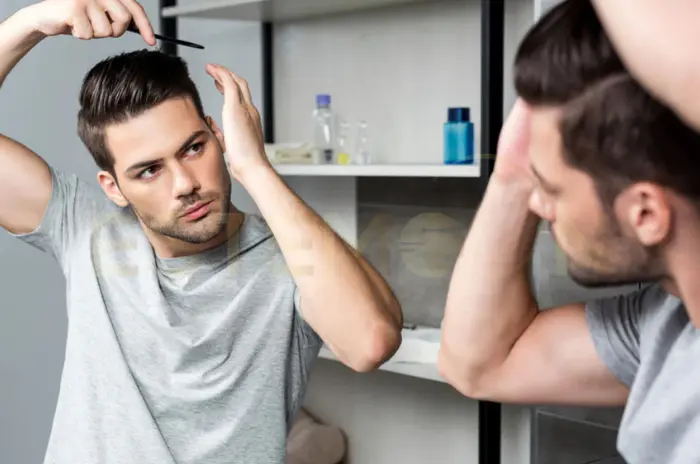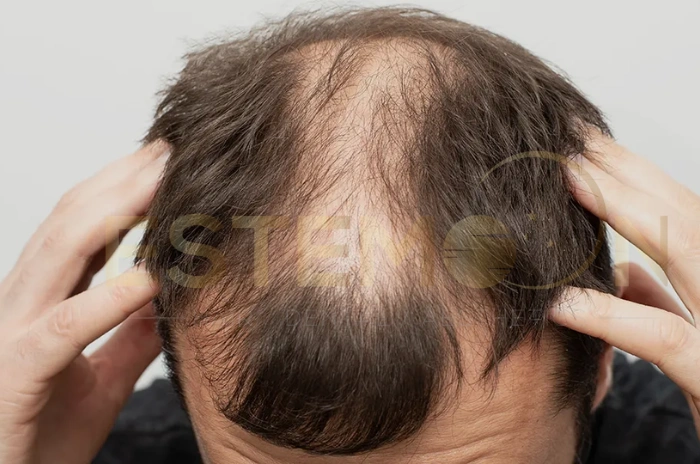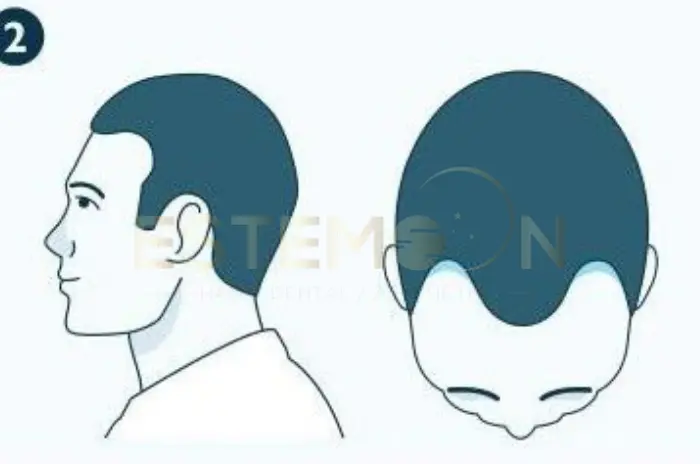Coarse hair is a unique hair texture that requires specialized care and understanding. This comprehensive guide explores everything you need to know about managing and caring for coarse hair, from identifying its characteristics to choosing the right products and treatments.
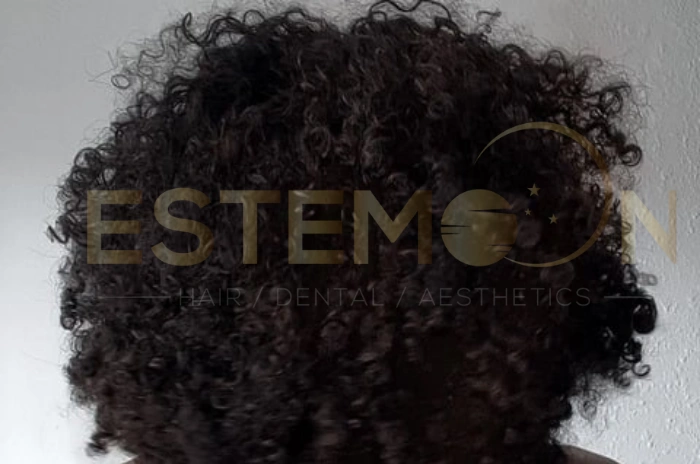
What Coarse Hair Means and How to Check
Coarse hair refers to hair strands with a larger diameter compared to fine or medium hair types. The texture feels rough and thick to the touch, with each individual strand being wider than average hair. Understanding your hair’s coarseness is crucial for developing an effective coarse hair care routine.
How to Test Your Hair Texture
To determine if you have coarse hair, try the simple strand test. Take a single hair strand between your fingers and roll it gently. Coarse hair will feel thick and substantial, almost like a piece of thread. You can also compare it to a piece of sewing thread – if your hair feels similar in thickness or thicker, you likely have coarse hair.
Another method involves examining your hair visually. Coarse hair characteristics include visible individual strands, less shine due to the rough cuticle surface, and hair that tends to hold its shape well. The hair often appears fuller and has more volume naturally.
Common Causes and Signs of Coarse Hair
Understanding what causes coarse hair helps in developing appropriate care strategies. Several factors contribute to hair coarseness, ranging from genetics to environmental influences.
Genetic Factors
The primary cause of coarse hair is genetics. Your hair texture is largely predetermined by your DNA, passed down through family lines. Certain ethnic backgrounds are more prone to coarse hair textures, particularly those of African, Mediterranean, and some Asian descents.
Environmental and Lifestyle Causes
Chemical processing, excessive heat styling, and environmental damage can contribute to hair becoming coarser over time. UV exposure, pollution, and harsh weather conditions can roughen the hair cuticle, making it feel more coarse than its natural state.
Hormonal Changes
Hormonal fluctuations during pregnancy, menopause, or due to medical conditions can alter hair texture. These changes may temporarily or permanently affect how coarse your hair feels and behaves.
Age-Related Changes
As we age, hair naturally becomes coarser and drier. The sebaceous glands produce less oil, and the hair shaft itself may change structure, leading to increased coarseness and reduced flexibility.
Diet and Vitamins That Support Coarse Hair
Proper nutrition plays a vital role in managing coarse hair and improving its overall health and manageability. Certain vitamins and nutrients can help soften the hair texture and enhance its natural shine.
Essential Vitamins for Hair Health
Vitamin E acts as a powerful antioxidant that protects hair from environmental damage while promoting circulation to the scalp. Biotin (Vitamin B7) strengthens hair structure and can help improve texture over time. Vitamin D deficiency has been linked to hair texture changes, making adequate levels important for maintaining healthy coarse hair.
Omega-3 Fatty Acids
These healthy fats help moisturize hair from within, reducing dryness and brittleness common in coarse hair. Sources include fatty fish, walnuts, flaxseeds, and chia seeds. Regular consumption can lead to softer, more manageable hair texture.
Protein and Iron
Since hair is primarily made of protein, adequate protein intake supports hair structure and strength. Iron deficiency can worsen hair texture issues, making coarse hair even more difficult to manage. Include lean meats, legumes, and leafy greens in your diet.
Hydration
Proper hydration affects hair health significantly. Drinking adequate water helps maintain hair moisture from the inside out, which is particularly important for dry coarse hair treatment.
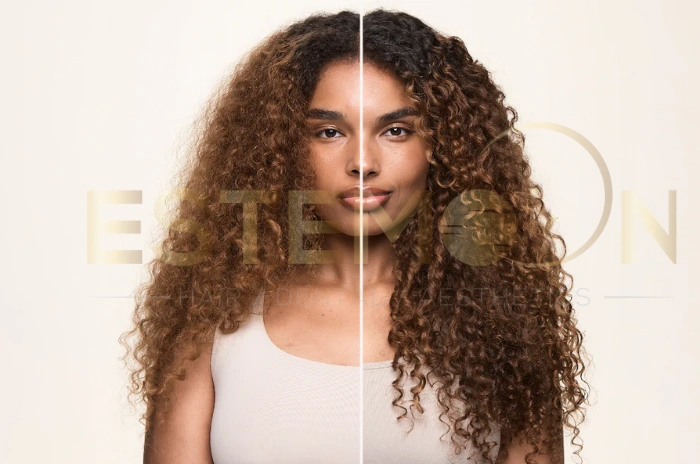
Essential Coarse Hair Care Tips and Best Practices
Effective how to care for coarse hair strategies focus on moisture retention, gentle handling, and protective styling. These practices help maintain hair health while managing its natural texture.
Washing Frequency and Technique
Coarse hair doesn’t require daily washing as it produces less natural oil than fine hair. Wash 2-3 times per week using lukewarm water to prevent stripping natural oils. Focus shampoo on the scalp rather than the hair lengths to avoid over-drying.
Conditioning Strategy
Deep conditioning treatments are essential for coarse hair care. Use a moisturizing conditioner after every wash, applying from mid-length to ends. Weekly deep conditioning masks help maintain softness and manageability.
Drying Methods
Air drying is gentler on coarse hair than heat styling. If using a blow dryer, apply heat protectant and use the lowest effective temperature. Avoid rough towel drying – instead, gently squeeze hair with a microfiber towel or cotton t-shirt.
Protective Styling
Sleep on silk or satin pillowcases to reduce friction. Use protective styles like braids or loose buns to prevent tangling and breakage. Avoid tight elastics that can damage the hair shaft.
Choosing the Best Products for Coarse Hair Types
Selecting appropriate best products for coarse hair requires understanding your hair’s specific needs. The right products can transform unmanageable coarse hair into soft, healthy locks.
Shampoo Selection
Look for sulfate-free shampoos that cleanse without stripping natural oils. Moisturizing formulas with ingredients like glycerin, aloe vera, or natural oils work well for coarse hair. Avoid clarifying shampoos unless removing product buildup.
Conditioner Requirements
Coarse hair benefits from rich, creamy conditioners with ingredients like shea butter, coconut oil, or keratin. Leave-in conditioners provide ongoing moisture protection throughout the day.
Styling Products
Creams and oils work better than gels for coarse hair as they provide moisture while offering hold. Look for products with natural oils like argan, jojoba, or coconut oil. Avoid alcohol-based products that can dry out already coarse hair.
Treatment Products
Hair smoothing treatments and protein treatments can temporarily improve coarse hair manageability. Keratin treatment for coarse hair can reduce frizz and make styling easier, though results are temporary and require professional application.
Effective Methods for Moisturizing Coarse Hair
Moisturizing coarse hair requires consistent effort and the right techniques. Proper hydration is key to managing coarse texture and preventing damage.
Deep Conditioning Treatments
Weekly deep conditioning masks penetrate the hair shaft to provide lasting moisture. Apply to damp hair, focusing on the mid-lengths and ends where coarse hair tends to be driest. Heat can enhance product penetration – use a shower cap or warm towel during treatment.
Oil Treatments
Pre-shampoo oil treatments help protect coarse hair during washing. Apply coconut, olive, or argan oil to dry hair 30 minutes before shampooing. This creates a protective barrier and adds moisture.
DIY Hair Mask for Coarse Hair
Create effective home treatments using natural ingredients. Mix avocado, honey, and olive oil for a nourishing mask. Banana and coconut oil combinations also work well for dry coarse hair treatment. Apply weekly for best results.
Leave-in Treatments
Daily leave-in conditioners or oils help maintain moisture between washes. Apply small amounts to damp hair, focusing on ends and avoiding the roots to prevent greasiness.
Coarse Hair vs Thick Hair: Key Differences
Understanding coarse vs thick hair differences helps in choosing appropriate care methods. These terms are often confused but refer to different hair characteristics.
Texture vs Density
Coarse hair refers to the width of individual hair strands – each strand is wider in diameter. Thick hair refers to the number of hair strands on your head – the density of hair follicles. You can have coarse hair that’s not necessarily thick, or thick hair that’s fine in texture.
Coarse hair vs fine hair Comparison
| Characteristic | Coarse Hair | Fine Hair |
|---|---|---|
| Strand Diameter | Large | Small |
| Feel | Rough, substantial | Soft, delicate |
| Styling Hold | Holds styles well | Struggles with hold |
| Oil Production | Less oily appearance | Gets oily quickly |
| Volume | Natural volume | Lacks natural volume |
| Damage Resistance | More resistant | More fragile |
Care Differences
Coarse hair needs more moisture and can handle stronger treatments, while thick hair might need volumizing products despite having natural fullness. How to manage coarse hair focuses on softening and smoothing, while thick hair care might focus on thinning and controlling volume.
FAQs About Coarse Hair what it means causes care tips and treatments
What is the difference between coarse and thick hair?
Coarse hair refers to the width of individual strands being larger, while thick hair means having more hair strands per square inch on your scalp.
How can I make my coarse hair soft?
Regular deep conditioning treatments, using moisturizing products, and applying natural oils can help soften coarse hair over time.
What are the best products for coarse hair?
Sulfate-free shampoos, rich conditioners with natural oils, leave-in treatments, and cream-based styling products work best for coarse hair.
How can you tell if your hair is coarse?
Take a single strand between your fingers – if it feels thick and substantial like thread and is easily felt, you likely have coarse hair.
Follow us on social media for updates, tips, and patient success stories:


